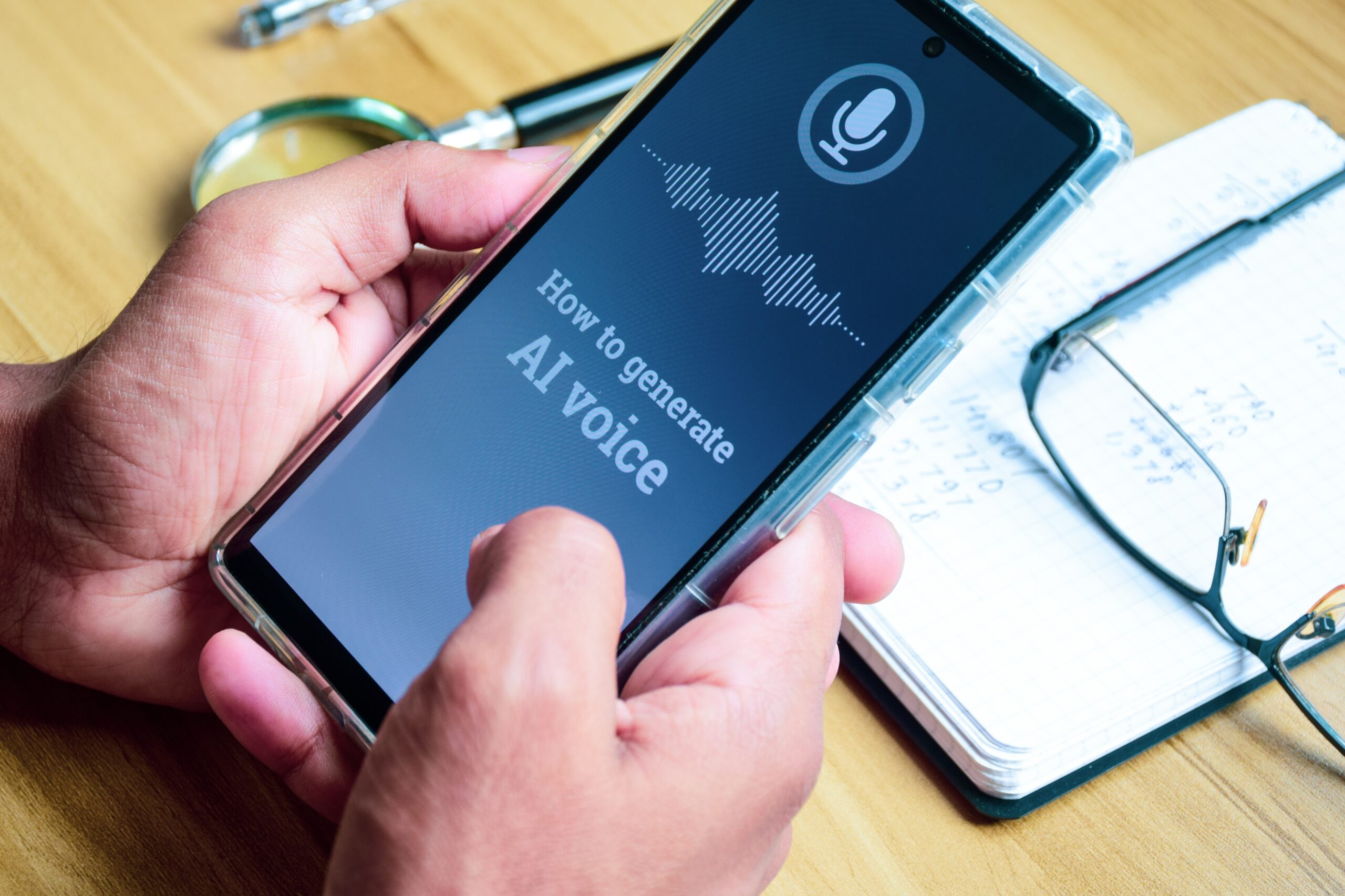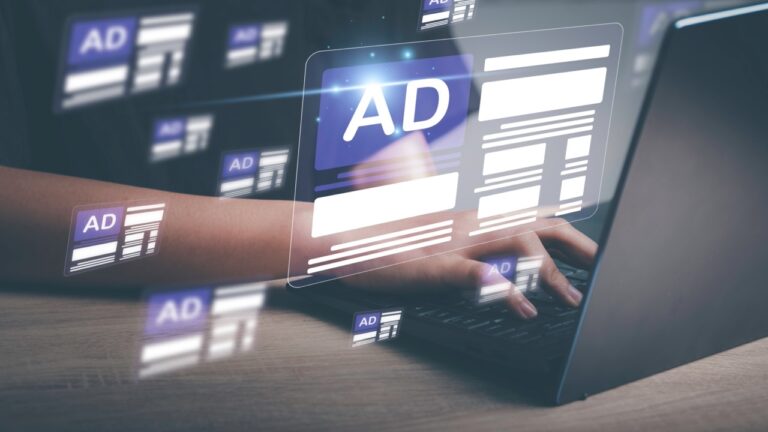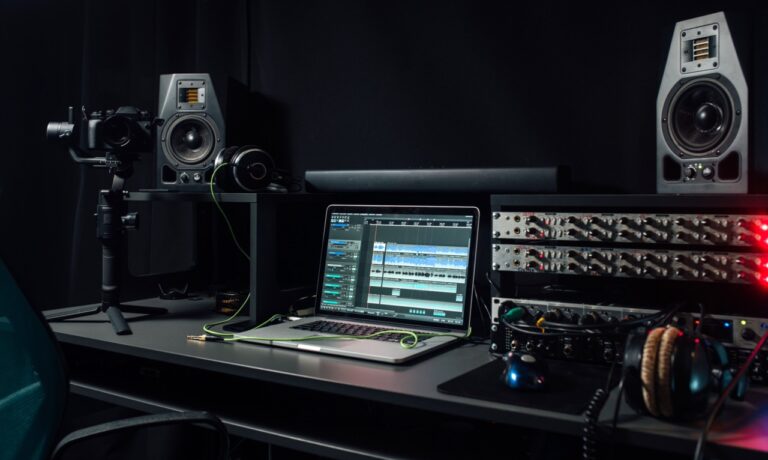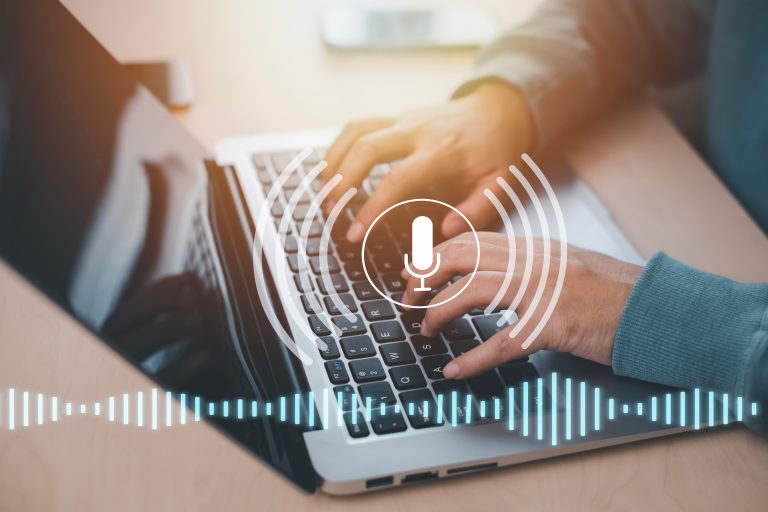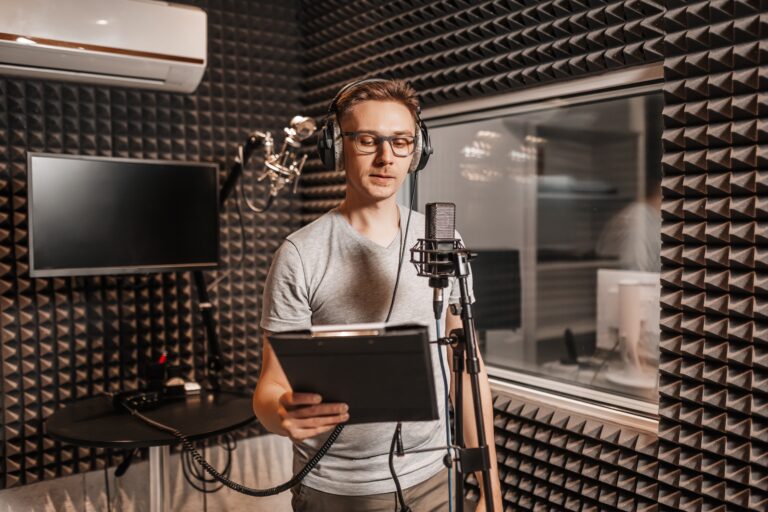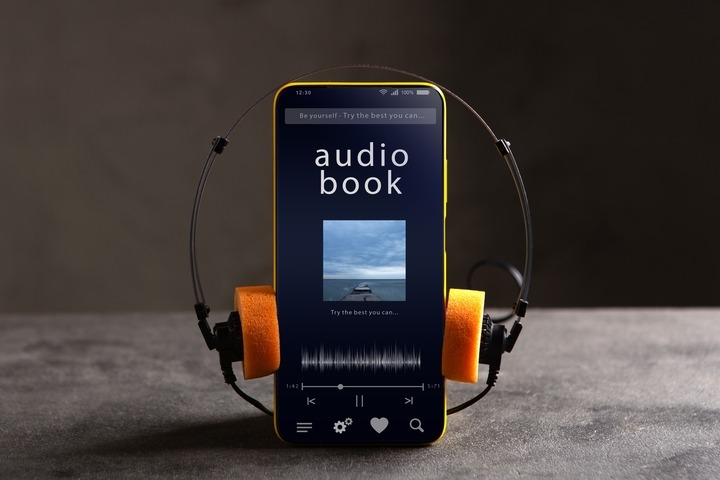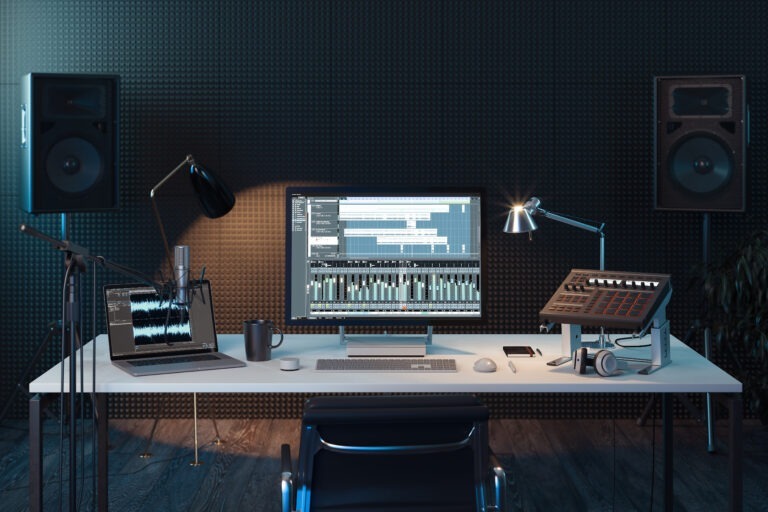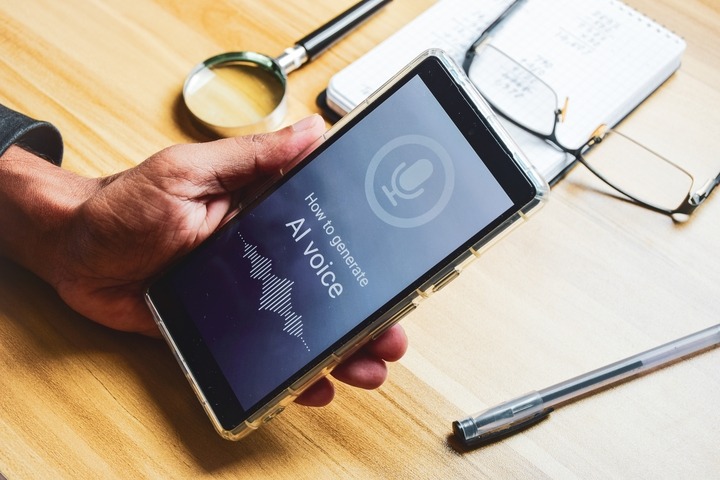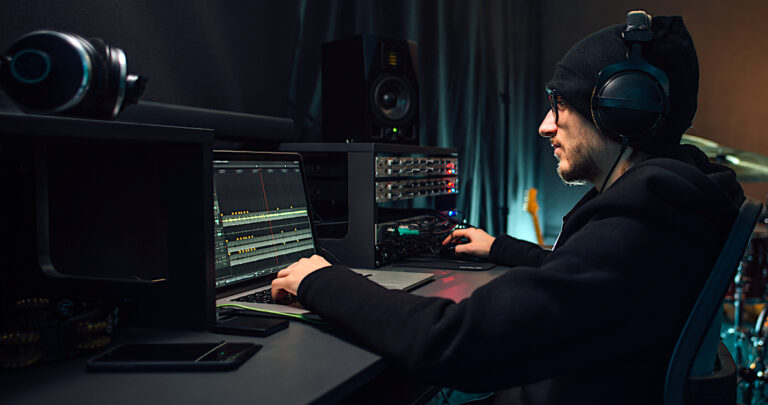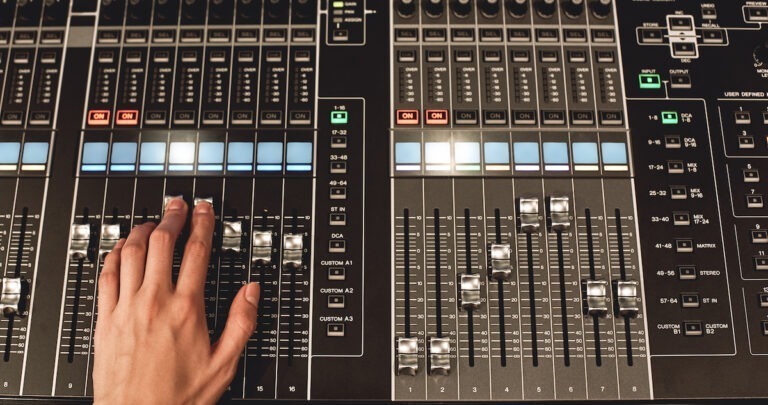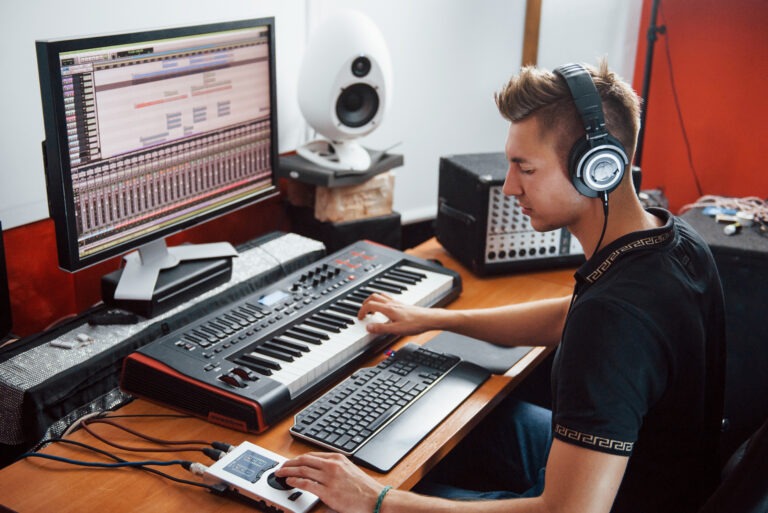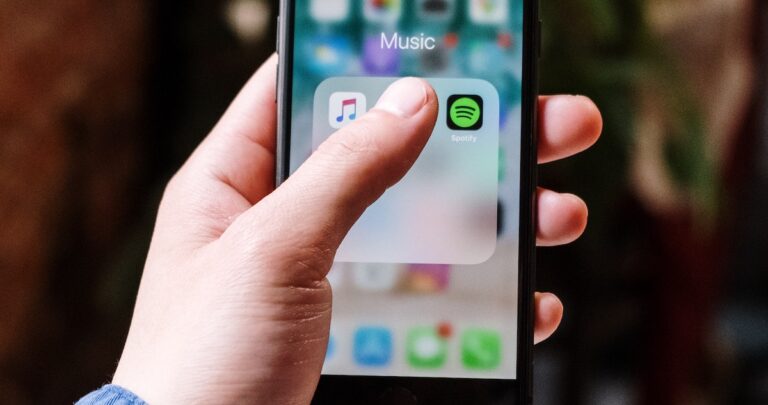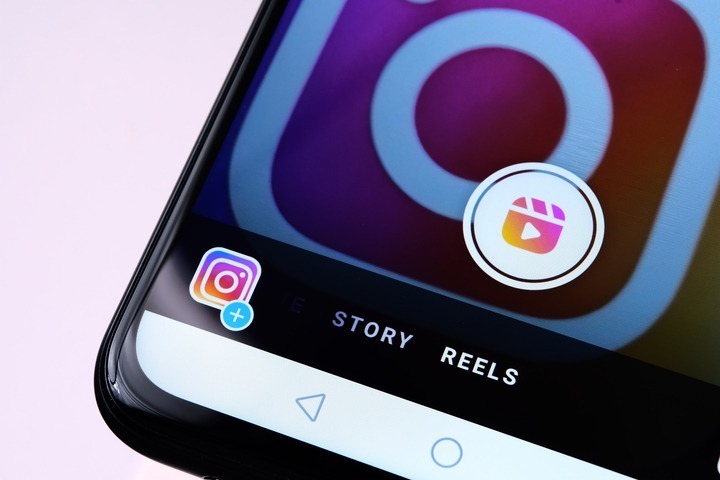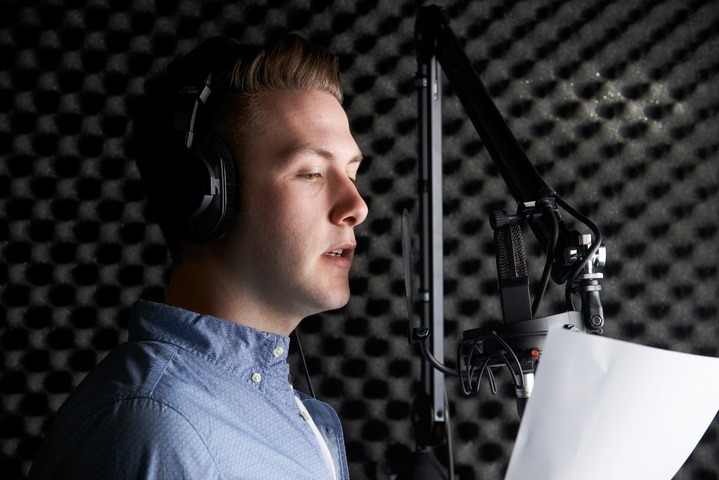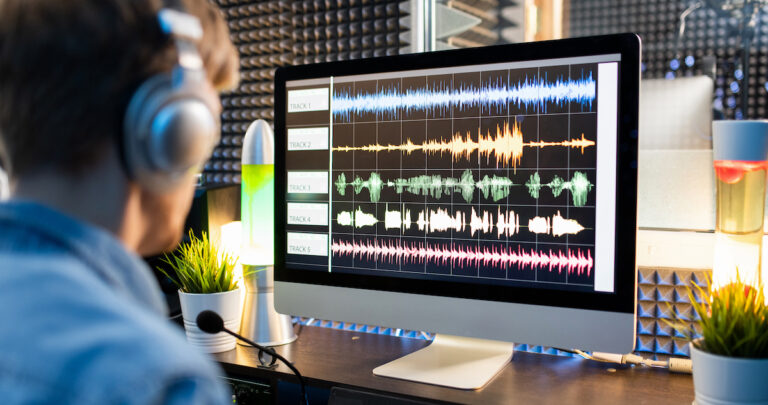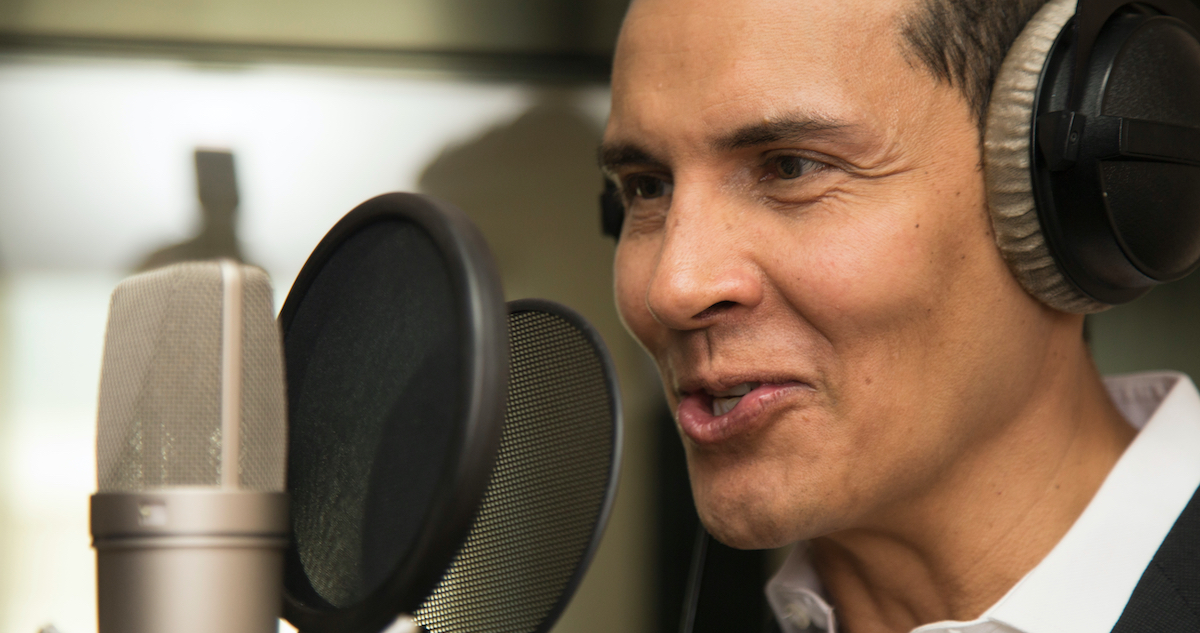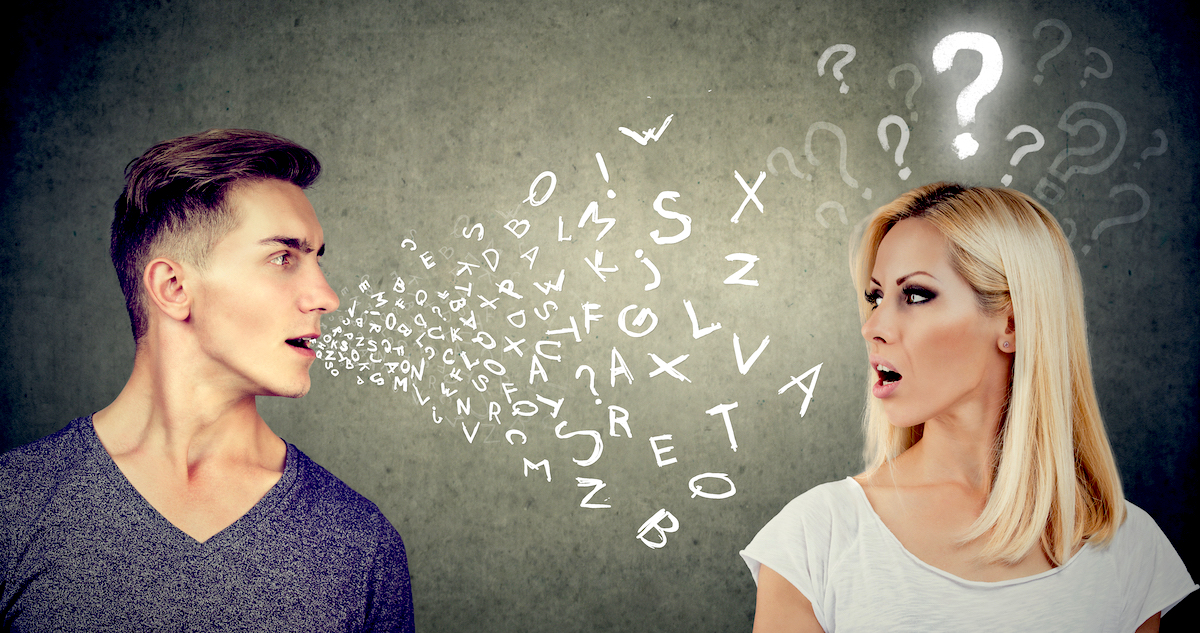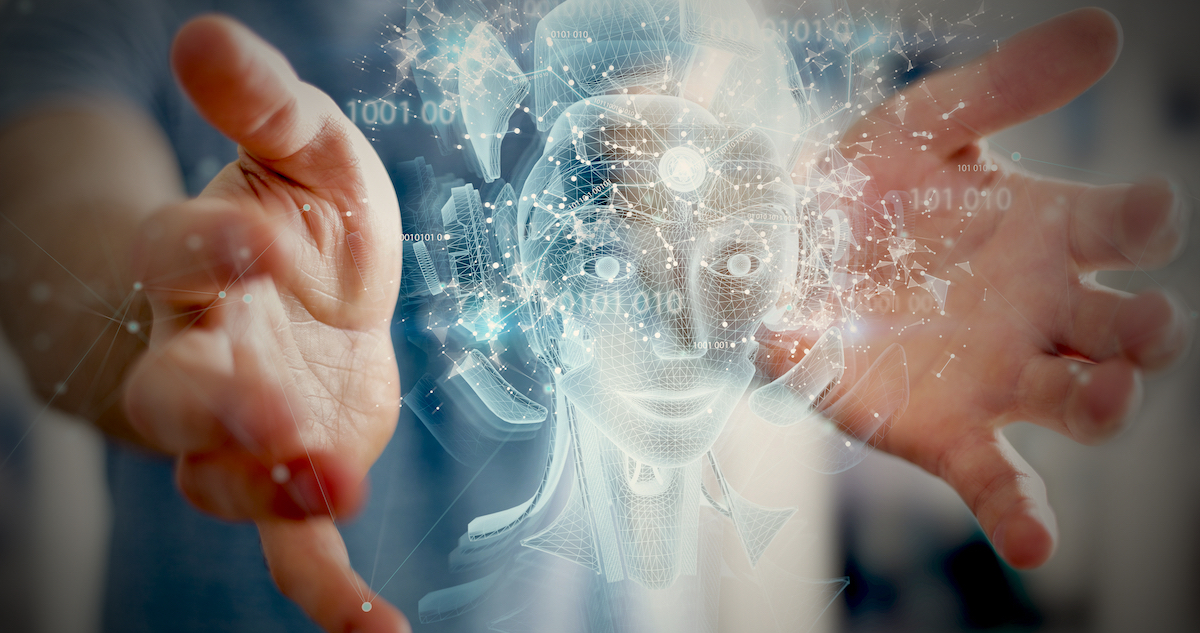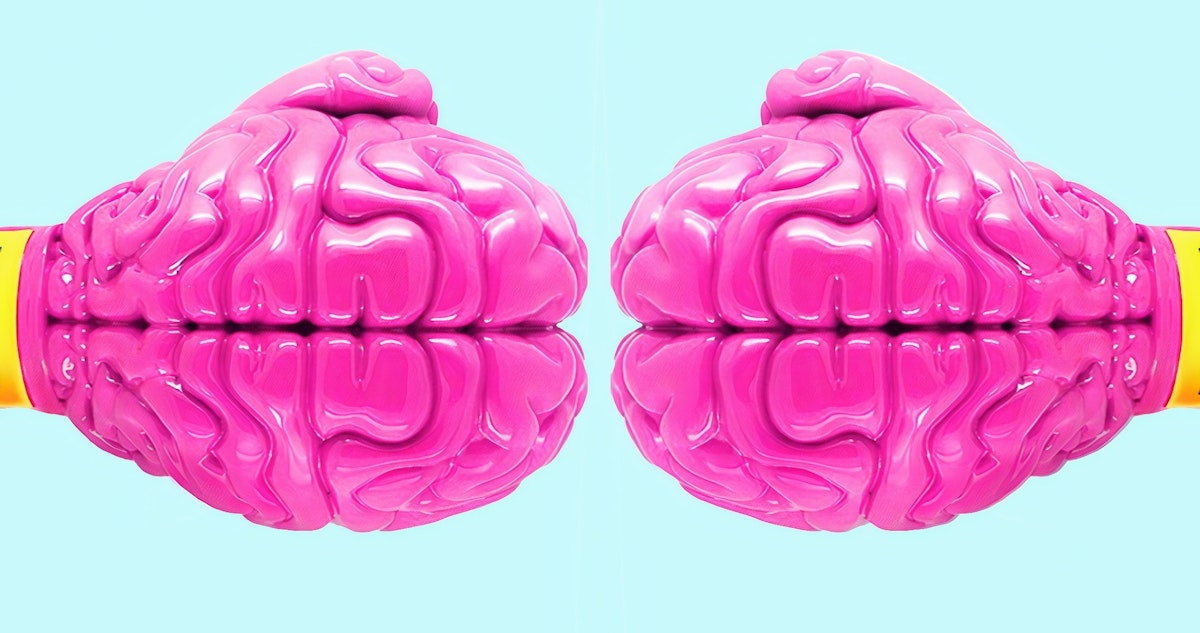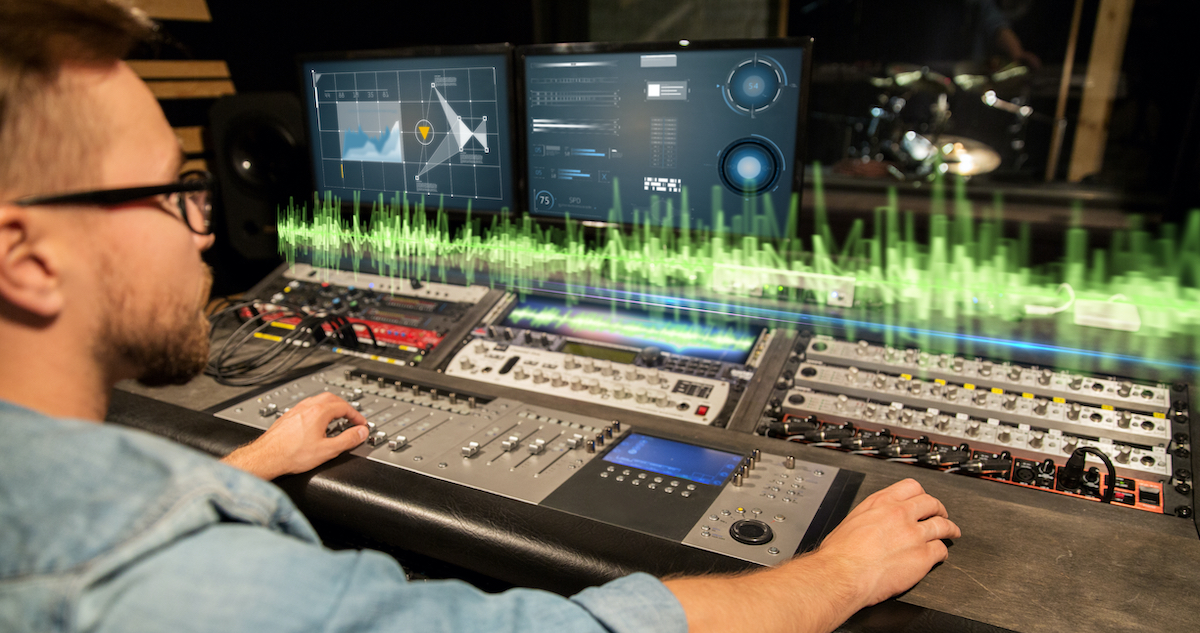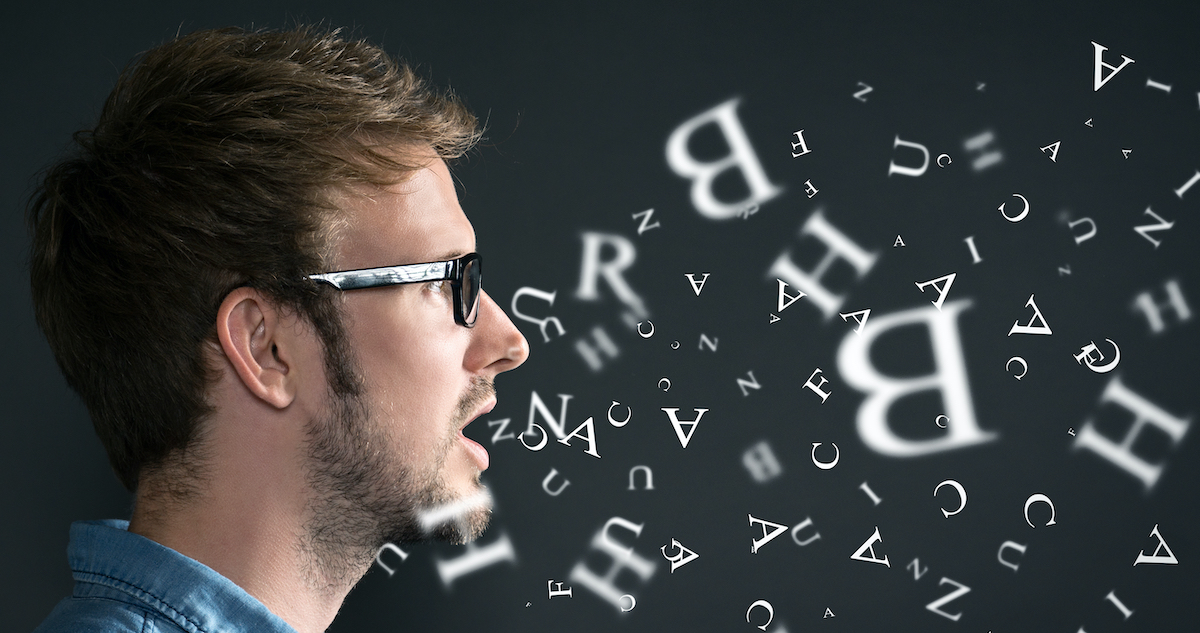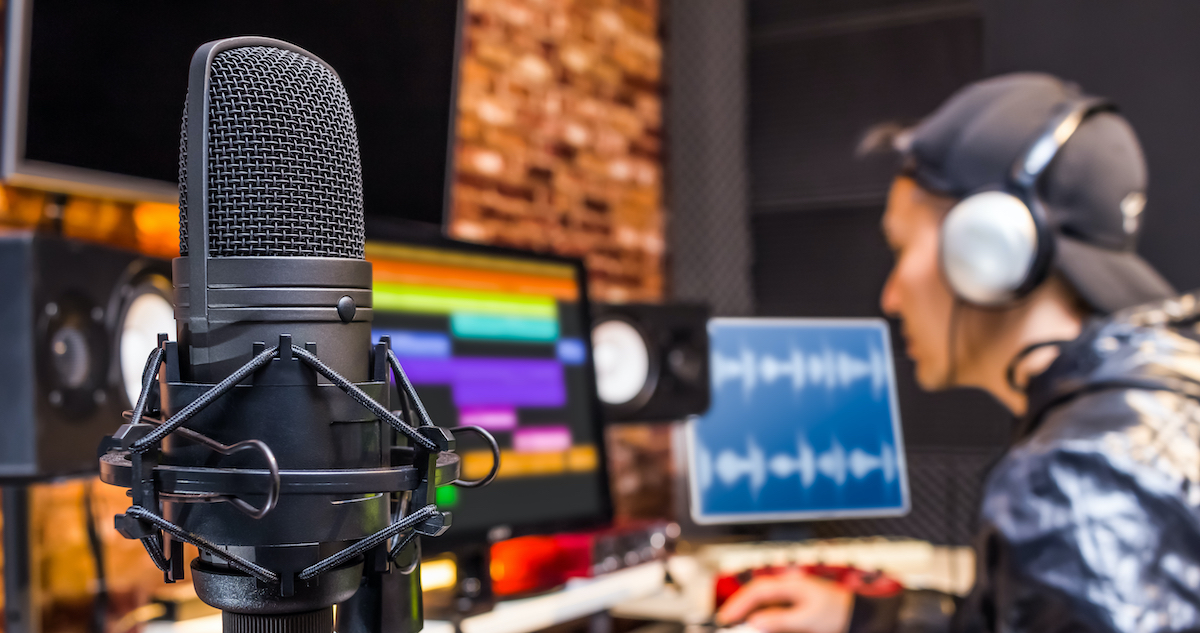AI voices are a constantly evolving technology. They’re used in everything from TikTok videos to virtual assistants to the point where they’ve even penetrated the voice over industry. Think of Val Kilmer’s AI voice in Top Gun: Maverick. So, whether you’re a filmmaker, video game creator, or producing a voice over video, an AI voice actor could be the right fit for your next voice over project.
At Voice123 – where you’ll find incredible AI voice overs for your projects – we understand the power of AI voices in the audio/visual industry. So, here we’ll explore what are AI voices, how to best use them in projects, and how to hire an AI voice actor on Voice123.
What are AI voices?
AI voices are computer-generated voices that mimic human speech through deep learning artificial intelligence techniques like computer concatenative programming language and statistical parametric synthesis to create customizable voices based on gender, age, accent, and other emotional characteristics. AI-generated voices also replicate voices from real people using audio samples – like James Earl Jones’ recently cloned Darth Vader voice.
But do AI voices text-to-speech have a place in your audio projects?
Should you use AI voices in your voice over projects?
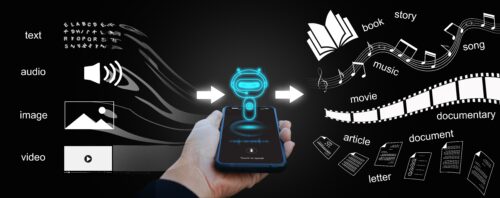
AI voices text-to-speech have 3 principal benefits: flexibility, cost-efficiency, and inclusivity. You can customize your AI voice over for tone and style or even record projects simultaneously in multiple languages or dialects, reducing pre- and post-production costs. It can also be used for scratch tracks, generating pickups and revisions, and down-to-the-wire projects where time is of the essence.
While human voices will always offer the best emotional nuances, creative input, and brand identity, with the increased popularity of AI, some voice actors now opt to create an AI voice over model of their voice for auditions, high output, or multiple language projects. This combines the authenticity and emotions of human performances with the efficiency of AI tech.
How to best use AI voices?
1. Audiobooks and podcasts
AI voices can narrate audiobooks and podcasts with consistent sound recorded over long periods, providing clear listening experiences for audiences. So, an AI voice actor could read a sci-fi novel with different character styles, eliminating the need for multiple human narrators.
2. Educational content
AI voices can create interactive and engaging e-learning modules or tutorials in the educational sector. TTS software could explain complex math problems on online learning platforms, making the content accessible to a broader audience.
3. Customer service
AI voice overs are helpful in customer service by creating interactive voice response (IVR) systems. So, AI-generated voices can help as assistants to customers, solving everyday issues or answering FAQs through a company’s helpline.
4. Video game development
In video games, an AI voice actor can generate dialogue, allowing for responsive interactions based on player choices. So, in a role-playing game, AI can create unique, procedurally generated quests and dialogue options, enhancing replayability.
5. Accessibility features
AI voices significantly improve accessibility for the visually impaired by reading out text from websites, apps, or documents. So, a web browser extension that uses AI to narrate web page content can make the internet more accessible to users.
How to hire AI voices on Voice123
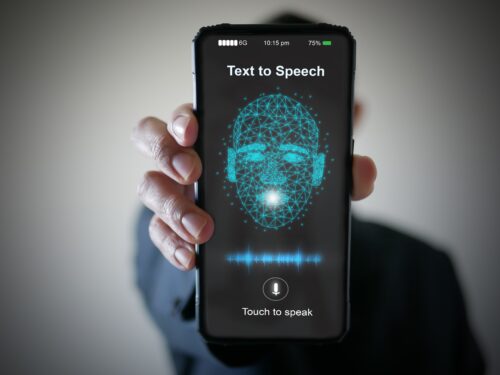
Do you need voice actors for an AI or TTS project? If so, there are a few guidelines and best practices to help you accomplish such a project. Check out our complete guide on TTS voice over projects here.
Or, you can contact our Managed Services team for more advice and A-to-Z project management.
In the near future, you will also be able to hire voice actors with AI voice models directly from our search engine – contact our support team to learn more via help@voice123.com
Final thoughts
So, folks, there’s nothing quite like a human voice! And while AI-generated voices aren’t on the same level as humans, they’re still gaining global recognition. They could even become a powerful tool to help brand and market your company or project to a broader audience.
Interested in using an AI voice actor for your next audio project? Contact our Managed Services for full-scale project assistance.
FAQs
It depends on specific user needs and preferences. Google’s WaveNet and Amazon’s Alexa are popular for their lifelike intonation and speech patterns.
Several tools have free tiers or trial versions, including Speechify and TTSMP3.
Yes, if you have permission and respect the provider’s terms of service, so always pay attention to copyright laws.
Descript’s Overdub is designed to clone an individual’s voice using a speech sample.


